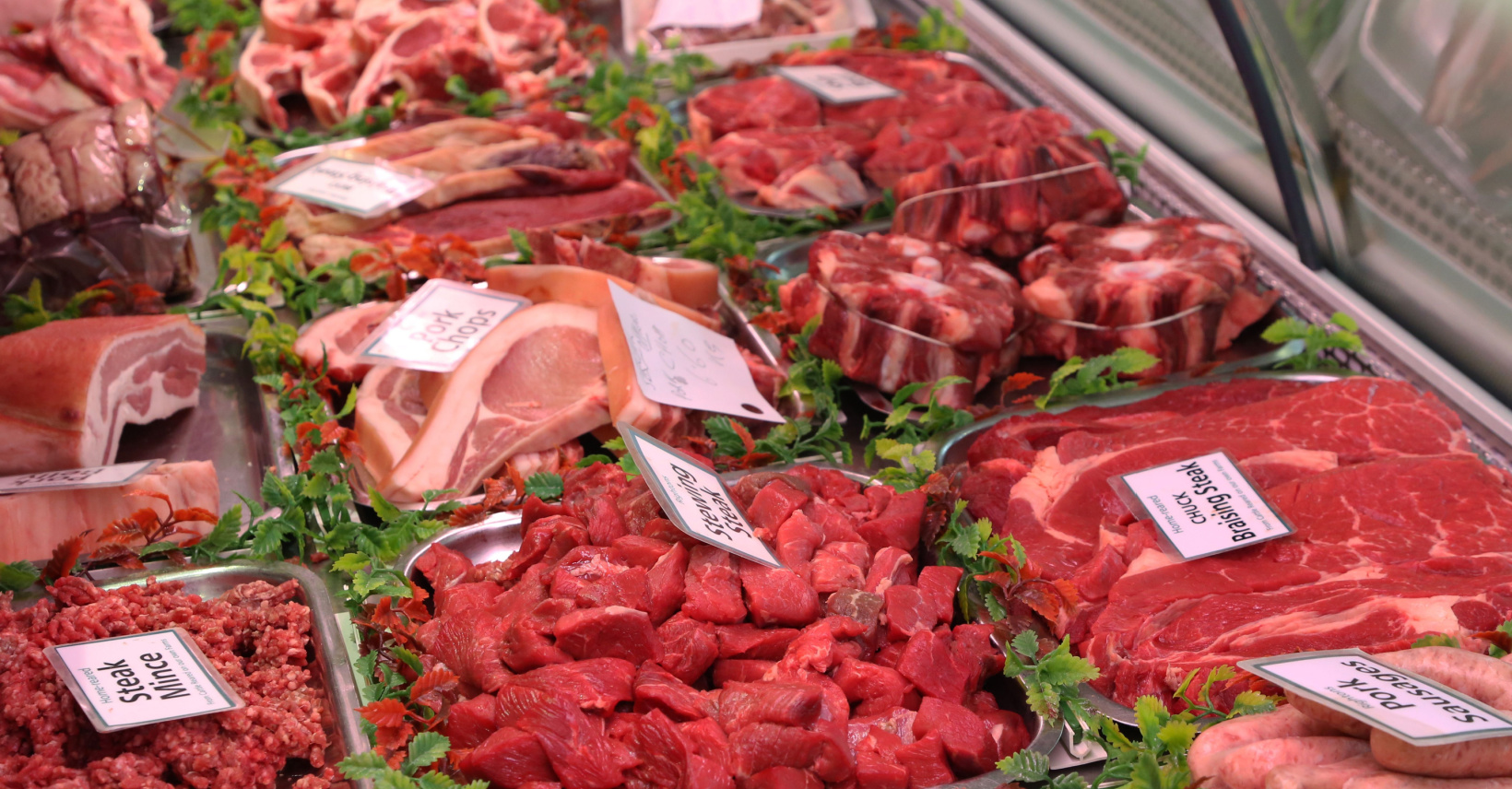With the rising inflation in the United States (and worldwide), food at the grocery store is one of the most prominent areas affected. However, since cuts of meat are already some of the highest-priced items in the supermarket, these inflated prices are only making things worse. In addition, meat is often the bulk of a family’s meal, so it can significantly impact your grocery budget when the price of meat skyrockets. If you want to figure out how to beat inflation at the supermarket and save money on meat, keep reading for ten great tips.
Why is Meat So Expensive?
A couple of factors are to blame for the high meat costs in 2023. For the most part, they have to do with the COVID-19 pandemic as well as inflation. During the height of COVID, most meat production plants shut down, so ranchers had nowhere to send their meat to. With nowhere to send their meat, they had to cut down on meat production substantially. Now that we are coming out of the pandemic, many ranches and plants are still picking up the pace, hence the high prices. There have also been extreme inflation issues over the last year, and since the demand for meat has gone up significantly, there’s a huge supply and demand imbalance.
Now that we’ve discussed why meat is so expensive right now, we can take you through some of the best tips for saving money on the high costs of meat. So keep reading below to learn how to cut your grocery bill!
1. Plan Meals Around Sale Meat
Rather than deciding what meats you’re going to eat and meals you’re going to make before you get to the store, choose once you get there and have a look around. You never know when something is going to be on sale. For example, if pork is a few dollars cheaper than chicken on that particular day, make a pork roast instead of chicken cutlets. Keep your meals flexible to ensure you can always buy the less expensive meat cut at the store rather than being tethered to a specific type of meat or a particular cut.
2. Find Coupons and Rebates
Depending on the grocery stores you shop at, you may have loyalty to one place or another. However, if you don’t currently have a rewards card for the store you shop at, you should certainly sign up for one. You can earn points and cash back or get specific rebates and coupons for items that are on sale. For example, sometimes, specific cuts of meat will be on sale, while other times, different meat categories are marked down if the grocery store received a surplus of meat for that day or week. So pay attention to in-store sales, coupons, and rebates to get the best deal!
3. Skip the Deli Counter
If you want lunch meat or “cold cuts,” buying it at the deli counter in the grocery store is probably the most expensive option, even though it is convenient. Deli meats can easily cost $8 to $11 for a pound of meat, which is practically robbery. Instead, you can go to the meat department and buy a chunk of ready-to-eat ham, turkey, bologna, or more! Additionally, sometimes you can find pre-packaged sandwich meats for less than they would be at the deli counter if you really need that convenience.
4. Buy Cheaper Cuts
While this might seem like a more obvious tip, buying cheaper, less luxurious cuts of meat will help you save money at the meat counter. For example, rather than opting for a porterhouse, center-cut pork chops, filets, or chicken breasts that have already been skinned with bones removed, choose the less expensive cuts. While the cheaper cuts might take more labor and prep time, it’s a common misconception that inexpensive cuts of meat are less tasty. In fact, by tenderizing and properly seasoning them, they can be just as good (if not better) than the expensive cuts.
5. Buy in Bulk at Club Stores
If you don’t have the space in your freezer to buy meat wholesale or buy an entire cow or pig from a farmer, another in-between option might be buying meat in bulk at club stores like Costco or Sam’s Club. If you have a membership to one of these places (or even if you don’t yet), it’s often more financially reasonable. Bulk clubs often have meat bargains on chicken wings, chicken thighs, pork chops, or lean ground beef. There are many items you can buy in bulk to save money, and meat is definitely one of them. Once you get home, break down larger packages into smaller portions to freeze for later.
6. Buy a Whole Cow or Pig
If you have the space in your fridge or freezer, you can purchase a whole cow or pig from a farmer! The amount of meat you will get will vary depending on the size and weight of the animal, but you’ll be looking at around 400 pounds of beef for a whole cow or 125 to 150 pounds of meat for a whole pig. For things like steaks, roasts, and ribs, buying a whole cow will be a good option for saving money, but ground beef will likely be around the same due to availability and demand.
7. Buy Frozen/Freeze Yourself
Buying frozen meat may not be the most appealing option. However, it’s actually completely normal to freeze meat or buy it frozen. To prevent freezer burn and keep it exactly the same as when you brought it home, use a vacuum sealer with plastic bags. Or, double-wrap it in butcher paper and then place it in a zip lock bag. This will prevent your meat from being exposed to air.
8. Build a Relationship With Your Local Butcher
As old-school as it may seem, there’s something to be said for building a relationship with your local butcher! If you frequent a particular store, having a relationship with your butcher can definitely help you save money on meat. It’s good to have an ally at the grocery store, and a butcher is probably the best one you could have. If your butcher knows you well, he may save specific cuts of meat for you, give you a reduced price, or even call or text you once he gets something in-store that’s particularly appealing.
9. Buy Reduced Price Meat
This tip is especially good for those who go to the grocery store multiple times a week or shop for specific meals by the day. Often, as the expiration or best-buy dates for packages of meat draw close, they’ll slash the prices to help the meat get sold. There’s absolutely nothing wrong with this meat; it’s just close to when it needs to be cooked. That being said, buying it for a meal that night or the next night is an excellent way to save money.
10. Eat Less Meat
This tip may seem counterintuitive, but one way to save money on the meat section of your grocery bill is to eat less meat! Not only is having a few meatless days during the week good for your wallet, but it’s also good for the environment! Meat production emits methane and other gasses that contribute to the destruction of the ozone layer and climate change. So while your individual meals won’t change the temperature of the earth, it can be a good practice to contribute what you can.











